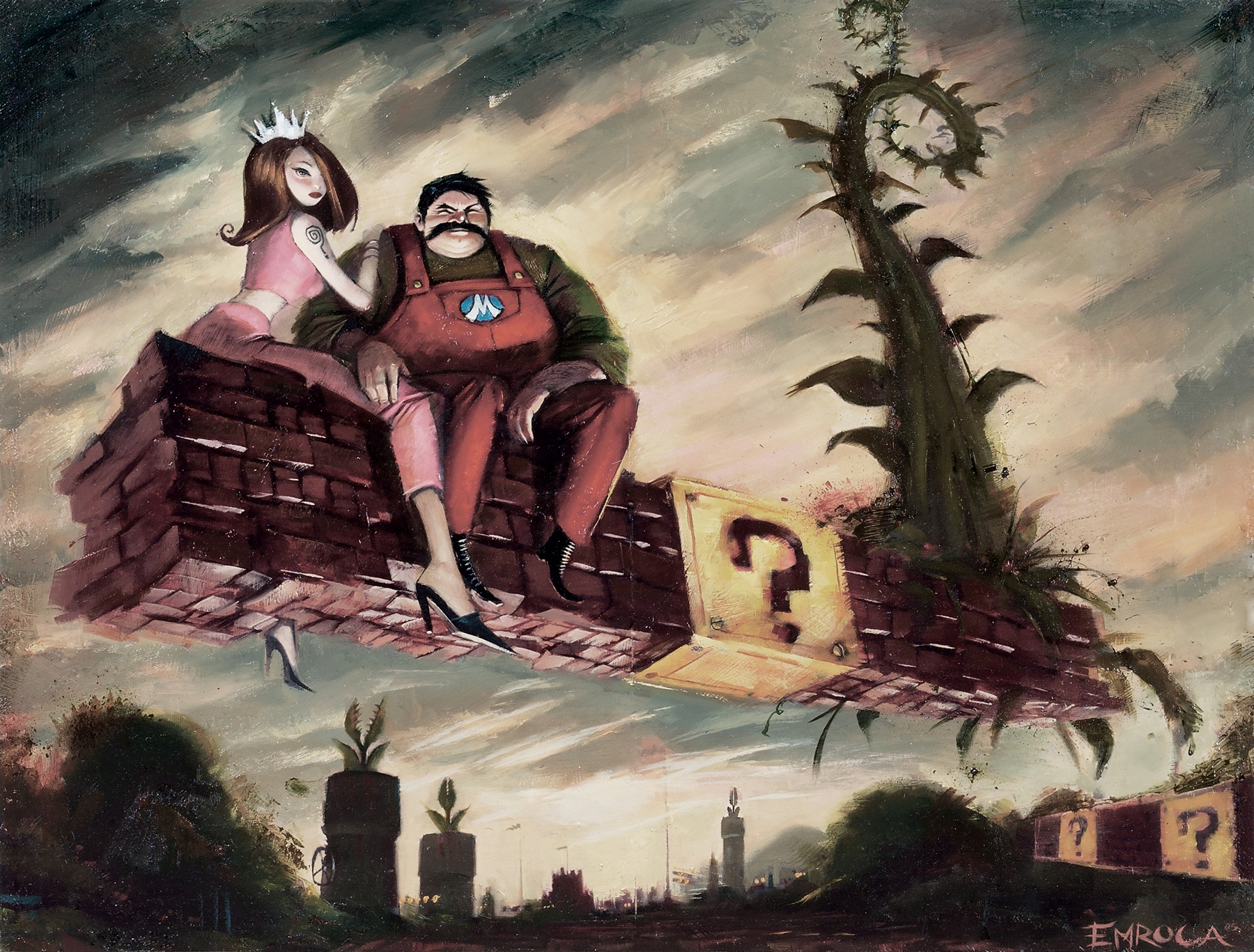Let's begin, shall we?
"On a long enough time scale, the survival rate for everyone drops to zero." - Jack, Fight Club
While attending the Nordik 2015 conference and its commendable digital art history sessions, I often found myself pondering the fragility of digital objects versus "real" objects. Not in a physical sense but in their existence. This is to say "When does an object cease to be an object?" New Materialism theory, which has admittedly factored heavily into my more recent research, states that the existence of an object is determined by its Ontology (the nature of its being), Agency (the evidential impact of its existence), and Politics (how it relates to objects outside its own existence). So my question in the context of this blog: What is the difference
Super Mario Bros. and
La Gioconda as objects? More importantly, what would it take for either cease to be? These are important questions for not only preserving these objects but for preserving an understanding of ourselves as human beings.
 |
| monalisa by Laurentiu Todie, digital photograph |
Da Vinci
's La Gioconda, or the
Mona Lisa if you prefer, is a bit of an art history phenomenon in terms of its influence and popularity. Not even considered Da Vinci's best work, it has been long argued that its elevated cultural status has more to do with the history of the object (especially noting the famous heist in 1911) rather than the experience or quality of the artwork itself. The ontology of the
Mona Lisa is that of a 15th century Italian Renaissance painting/portrait, but its agency transcends this physical manifestation. It has been speculated that this painting has inspired more related artwork in song, poetry, literature, and popular culture than any other painting in existence. Digitization of its iconic image presents an interesting question however: Are these digital copies also the
Mona Lisa? The knee jerk reaction would be to say "no". That only the painting itself can be considered the actual
Mona Lisa. But ask yourself how many people in the world are familiar with this painting through a copy of its image versus those who have actually experienced it in person? Which truly has a greater impact on human culture at large? The original physical painting begins to seem more negligible in this context. So I ask you, if the original painting ceased to be for some tragic reason, would the
Mona Lisa also cease to be as an object? Arguably, the biggest impact of such an event would be a slightly less crowded room at the Louvre today. (Perhaps a commentary on the politics of the object?)
 |
| Dark Mario World by Jose Emroca Flores, oil painting on wood |
Shigeru Miyamoto's
Super Mario Bros, in contrast as a digital object, has no singular, original physical form. Its ontology is that of a late 20th century Japanese video game, but its agency is far reaching. The virtual hero of this game, Mario, was identified in the 1990's as more recognizable to American children than Mickey Mouse. (To date, the game has sold over 40 million units.) This video game's impact on the world and human culture is clearly evident from the global athletes we have dubbed "Super Mario" to the game's impact on the entire gaming industry itself. An upcoming Australian 2015 exhibition by Aurela Carbone and Alex Bishop-Thorpe (which in the spirit of disclosure, I will be contributing an catalog essay to) has the famous Minus World glitch from
Super Mario Bros as its central visual element. However, unlike the
Mona Lisa, no original incarnation of
Super Mario Bros exists. (It's publisher, Nintendo, has long since discarded the original computer hardware and software code.) Our collective experience with this game, beyond the original developers, is that of some form of copy only. But its agency and its resulting politics (another subject for another time) arguably has had as great of an impact, if not more so, than the
Mona Lisa today. In this context, is the
Mona Lisa any more "real" than
Super Mario Bros?
In short, I currently believe the physicality of an object is mostly irrelevant to the state of its existence. While physical preservation is important to a degree, there are far more pressing factors to consider in preserving an object whether physical or digital. (Interactivity is a whole other subject as well!) Ultimately, it is when an object slips from our collective memory as human beings or ceases to influence our actions and thought processes that an object truly becomes endangered. As the opening quote suggests, that may only be a matter of time for not just anyone, but anything as well.


No comments:
Post a Comment